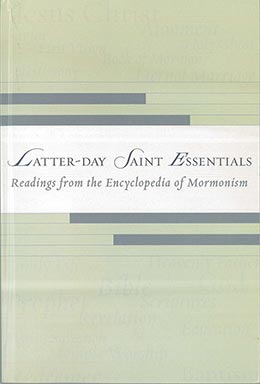Baptism for the Dead
H. David Burton
H. David Burton, “Baptism for the Dead,” in Latter-day Saint Essentials: Readings from the Encyclopedia of Mormonism, ed. John W. Welch and Devan Jensen (Provo, UT: BYU Studies and the Religious Studies Center, Brigham Young University, 2002), 101–2.
Baptism for the dead is the proxy performance of the ordinance of baptism for one deceased. Joseph Smith taught, “If we can baptize a man in the name of the Father [and] of the Son and of the Holy Ghost for the remission of sins it is just as much our privilege to act as an agent and be baptized for the remission of sins for and in behalf of our dead kindred who have not heard the gospel or fulness of it” (Kenney, p. 165).
The first public affirmation of the ordinance of baptism for the dead in the Church was Joseph Smith’s funeral sermon for Seymour Brunson in Nauvoo in August 1840. Addressing a widow who had lost a son who had not been baptized, he called the principle “glad tidings of great joy,” in contrast to the prevailing tradition that all unbaptized are damned. The first baptisms for the dead in modern times were done in the Mississippi River near Nauvoo.
Revelations clarifying the doctrine and practice have been given from time to time:
1. This was a New Testament practice (1 Cor. 15:29; cf. D&C 128.
2. The ministry of Christ in the spirit world was for the benefit of those who had died without hearing the gospel or the fulness of it (1 Pet. 4:6).
3. Such baptisms are to be performed in temple fonts dedicated to the purpose (Teachings, p. 308; cf. D&C 124:29–35). In November 1841 the font in the unfinished Nauvoo Temple was so dedicated.
4. The language of the baptismal prayer is the same as for the living, with the addition of “for and in behalf of” the deceased.
5. Witnesses are to be present for proxy baptisms and a record is to be kept in Church archives (D&C 128:3, 8).
6. Women are to be baptized for women and men for men.
7. Not only baptism but confirmation and the higher temple ordinances may also be performed by proxy (Teachings, pp. 362–63).
8. The law of agency is inviolate in this world and the world to come. Thus, those served by proxy have the right to accept or reject the ordinances.
In the early years of the Church, proxy baptisms were performed only for direct blood ancestors, usually no more than four generations back. Today, Latter-day Saints are baptized not only for their own forebears but also for other persons, unrelated to them, identified through the name extraction program. The practice reflects the yearning of children for their parents and of parents for their children, and charitable feelings for others as well, that they receive the fulness of the blessings of the gospel of Jesus Christ. In LDS perspective, whatever else one may do to mourn, give honorable burial to, cherish, or memorialize the dead, this divinely authorized ordinance of baptism is a demonstration of love and has eternal implications.
Bibliography
Kenney, Scott G., ed. Wilford Woodruff’s Journal, Vol. 2. Midvale, Utah, 1983.
Smith, Joseph. Teachings of the Prophet Joseph Smith, comp. Joseph Fielding Smith. Salt Lake City, 1976.
Widtsoe, John A. “Fundamentals of Temple Doctrine.” Utah Genealogical and Historical Magazine 13 (July 1922): 129–35.
